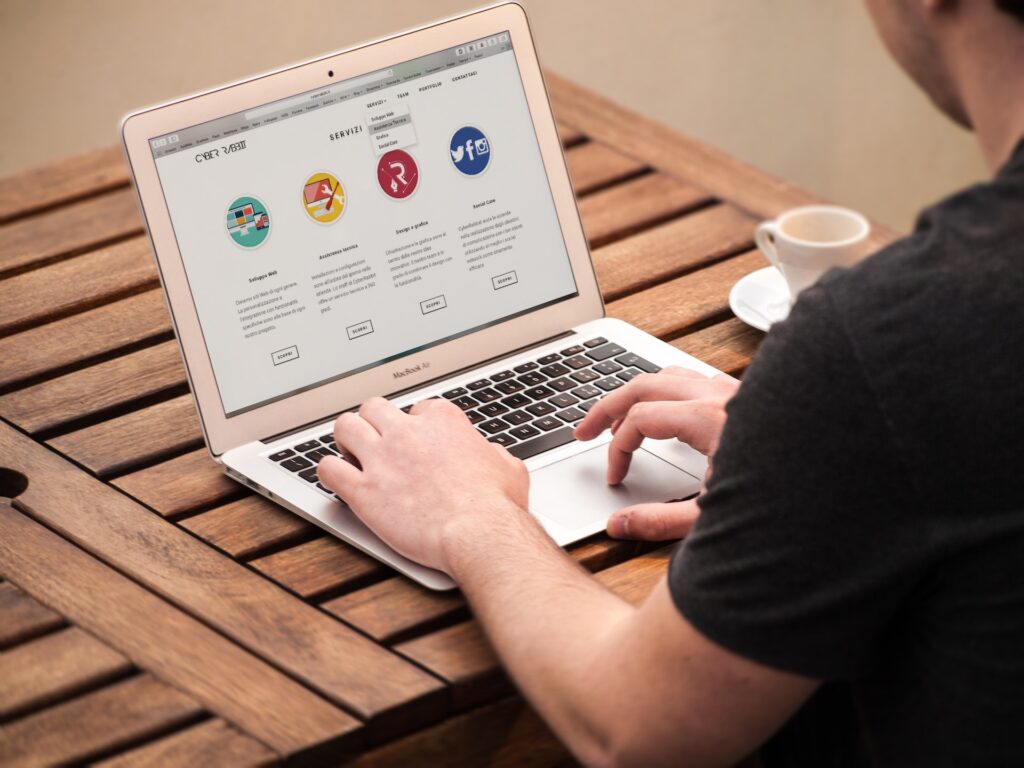Your website’s landing page is vital to your online success. It’s the first thing potential customers see when they visit your site, and it’s where they decide whether to stay or click away. Landing page optimization tips can help you to hike conversions.
That’s why it’s so important to optimize your landing page for conversions. Remember these basic tips and you’ll be sure to see a boost in your conversion rate. We’ll move to advance tips later in this post stay connected!
Key Takeaways
- Keep it simple
- Make your offer clear
- Use images
What is Landing Page Optimization?
The landing page optimization or LPO is the method of dynamically improving various elements of the landing page to boost the conversion rate. The purpose is to make visitors do what you want through making a buy or signing up for a letterbox.
In any landing page optimization strategy, not a single element can be disregarded. In this regard, layout and visual design are also needed to be planned, to have the main page which is clean, uncluttered, and simple to drive around.
The title and distinctive concept should ideally do well in expressing the core advantage of the offered product or service. The call-to-action buttons have to have the convincing text and be very visible to ensure the visitors click right on them and submit their data.
Also Read:- Leveraging Digital Financial Tools for Enhanced Money Management
Why is Landing Page Optimization Important?
Effective landing page optimization makes the difference between just a business with a tiny profit on sales and a successful online store. Well-designed landing page provides a user every chance of taking action necessary, that is, to get converted. Not only can a landing page appear cluttered, with its layout and messaging that confuse the viewers, but it can also hinder their major goal- conversion.
Take advantage of the language of your landing pages to design the headline, copy, call-to-action, images, videos, and layout of the page so that you will be able to guide the targeted audience to your desired goal. By looking at different variables, you express themselves the way they did in the original and dynamic way, which convinces your target audience.
With these insights, you can amend the process to address any pain points and friction that is occurring during the conversion period. The key to this is that you do this in gradual steps to prevent an overload of change that would be difficult for customers to adjust to. Whilst the role of landing pages is significant in terms of driving sales and marketing, the benefits should not be limited to such cavities only.
Applying such effort pays across the board from sales, marketing, to the entire enterprise, as small improvements in conversion rate may result in a great revenue increase. It is not simply the highest return on investment, but ‘landing page optimization’ is also a very important activity for growing profitably.
9 Tips to Hike Landing Page Optimization Conversions
Making landings pages more conversive is the key in the raise of leads and sales. Resting on some careful landing page optimization will enable you to nail conversions and recover more sales from your traffic.
Here are the landing page optimization tips to hike conversions:
1. Make a Single Page built on Purpose
2. Devise a Convenient VP
3. Choose the right words for your website
4. Optimize Lead Capturing Procedure
5. Optimize Images
6. Dealing with Page Speed
7. Position Call to Action Button with Strategic Positioning
8. Personalize Content
9. Test and Optimize incessantly
1. Make a Single Page built on Purpose
- The task of a landing page is a single objective with a connection to your marketing goal and provides visitors with an incentive to take one specific action.
- If you want your visitors to achieve any specific action, one sign-up, downloads, purchase etc. make sure you include your message loud and clear without distractions.
- Having a single main CTA button to be situated at the top part of the page helps the visitors in making better conversion decisions as they are guided better.
Streamline Information Architecture
- Avoid adding in any extra information which doesn’t support the specific goal of that page on the page. Remove any extraneous content.
- Solid and simplified with distractions that eliminate confusion and dilute the number of users who visit other sites instead of your website. Your business is less likely to be forgotten if visitors make a more personal connection with your value proposition.
2. Devise a Convenient VP
Highlight Benefits
- You should certainly be explicit about how the product you are pitching addresses pain points as well as brings value for the audience. Emphasize the main benefits to lure customers.
- Adopt a visitor centric approach and language that uses “you” instead of “we” for a more personalized approach to engagement. List the benefits to demonstrate the reliability of the project.
- Trust is one of the most important things to you should consider building. Add testimonials, customer logos and positive reviews to your site to show that your company works and will do the job at the best level.
- The social proof also works to show that the visitors who have come before praise the brand.
- In addition, certifications and secure payment badges are seriously thus.
3. Choose the right words for your website
Use Scannable Layout
- Dividing long Text into simple paragraphs, bullet points, numbers lists for readers to go in an out quickly.
- Include descriptive header, sub-header and bold words to emphasize crucial topics.
- Emphasizing critical points form easy comprehensions, and visitors can determine quickly your worth.
Craft Compelling Copy
- Keep it broadly conversational but freely professional. Take into account the possible audience who will read it. Avoid excessive ad-like hype.
- Underline how the benefit to customers is practical and comes from concrete and easily quantifiable solutions.
Create an account to reveal the answer to the question.
- Sway visitors around the fact that your option is needed in their lives.
4. Optimize Lead Capturing Procedure
Reduce Form Fields
- Anonymity is a significant psychological barrier for people. Therefore, do not ask unnecessary questions such as name, email address, or phone to reduce abandonment. The speaker further specifies on these details later.
- Progressivelly profiling users rather than demanding an enormous amount of information initially will encourage more people to use the app. Every field represents a competitor which vanishes each person you had.
Offer Incentives
- Incentives, discounts, or gifts free trials make visitors more ready to turn into sales by desire of preconceived value.
- Whether it is books, guides, coupons, etc. act as an immediate pay for conversions.
5. Optimize Images
Include Relevant Graphics
- Images that get used to explain what your product is, as well as its value to the user, should be employed quickly. Yet, infographics do the job of translating some complex information.
- A photo of actual people using your product builds credibility as they can relate to the experience of the user.
- Make sure that images sort quickly instead of slowing down the page speed.
- Emornative text images should be with blank alt text, whereas functional images have to have descriptive alt text in order to improve SEO and accessibility.
- You should write an alt-text comment with a description of the picture’s goal or content rather than overloading a comment with keywords.
- It enables search engines to realize visual information and people with disabilities who use screen readers to perceive value behind it.
6. Dealing with Page Speed
Compress Large Files
- Pages that have images, videos and animations, load slower and the page weight significantly increases.
- Conserve video and image components while staying quality-focused and render them on demand to raise download speeds.
Minimize Redirects
- Load speed is another issue, as it is directly connected to the number of redirects. It is one of the preconditions for a visitor to wait, thus you lose his confidence and trust.
- The forms, buttons, as well as links should be straight generally without interlinks that bring to more than one place.
Optimize Code
- Remove excess code and JavaScript being interpreted by your browser, and rid your page of the tracking pixels and plugins that are slowing it down.
- The browser caching enable faster page loads by memory-stocking assets in local interface of the browser.
7. Position Call to Action Button with Strategic Positioning
Above The Fold
- Display your CTA button right above the place where you would usually begin scrolling to ensure your visitors see it without having to scroll.
- In the end, the earlier a button is placed, the greater the amount of clicks it will likely get compared to those buttons located further down on the page.
High Contrast Design
- Employ contrasting color to buttons for the page background in order to make the background stand out. Bearing in mind this, the CTA text of your ad should be bolder.
- The button needs to be more clickable. Letting size and color to be the visual emphasis helps in the conversion rate.
8. Personalize Content
Dynamic Text
- The visitor specific dynamic text serves to increase the page’s relevance. Example are as following inserting the name of their company or anything.
- Customization is the way to go as visitors get to feel special helping them have an individualized experience as opposed to a generic one.
Behavioral Targeting
- Create customizable content on a page depending on visitor’s location, source, referring pages, past behavior, etc. that is to their needs.
- User-oriented content, site relevance to interests, and context provide the base for engagement.
9. Test and Optimize incessantly
A/B Test Variations
- Run A/B testing periodically to check the effectiveness of headlines, copy, color of buttons, or page layouts.
- You need to only retain variations that are raising conversion and frequently test new ones.
Analyze Metrics
- Examine user patterns using heatmaps and user recordings. Observe them figuring out which site element they respond to, look at, and eventually just ignore.
- The indictor will help you to see what prevents you from clicks and conversion rates.
Conclusion
From the website’s structure to the steps of the conversion process improvement, landing page experience is the centerpiece of transforming visitors into potential business outcomes.
Picking up the above 9 tips is aimed to help you gain a better understanding of what exactly your visitors expect from your site and how to steer them successfully through the conversion funnel with the appropriate, compelling and straightforward pages built around their needs. In addition to doing the perennial checking of variations and tracking behavior, you can make the necessary changes to the content and way of how the audience interacts with it.
Strategic optimizations that are driven by data remain constant for your scaling purposes and conversions (landing pages and campaigns) across the board.




